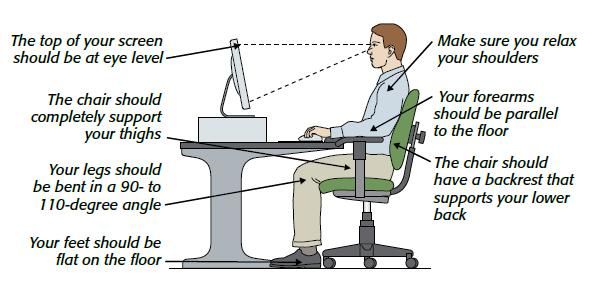New technologies introduce both new diseases and cures.
Sometimes health issues we think "will be fine in a few days" can grow into life-long troubles. It's essential to take preventative measures to guard our health in this digital age.

Spot the problem
If your life relies on electronic devices, you may be at risk of health issues related to excessive time on technology.
Want to know a little bit more about the health risks induced by technology? Here's a simple Check-list for you to tick.
Vision problems
Red eyes
Dry eyes
Blurry vision
Nausea caused by too much screen time
Pains
Neck pains
Headaches
Upper back pain
Shoulder stiffness
Arm and hand pain
Mental disorders
Phantom vibration
Fear of missing calls or emails
Obsession with online health care information
Addiction to online activities

Solutions
It's both the brief moments you sneak a glance at an email, and the many hours spent in front of a computer screen that contribute to health issues.
Follow the steps below to make sure these minor issues don't grow into lifelong problems.
First, adjust your posture as the picture shows:

Also keep in mind
Limit screen sessions into 20 mins blocks
Enjoy some technology-free time
Stand up and stretch regularly
Quiz
What will be a healthy way to relax when you just spent hours working online?
Summary
Sure, you might think text thumbs are common, and frozen shoulders are no biggie. But this isn't true.
Mild symptoms such as tendonitis, sciatica, or tech addiction might start small, but if we don't correct them they can cause permanent damage to our physical and psychological welling.
Consider the suggestions above. Is there one change you can make to your tech usage today to prevent these issues?
Your feedback matters to us.
This Byte helped me better understand the topic.